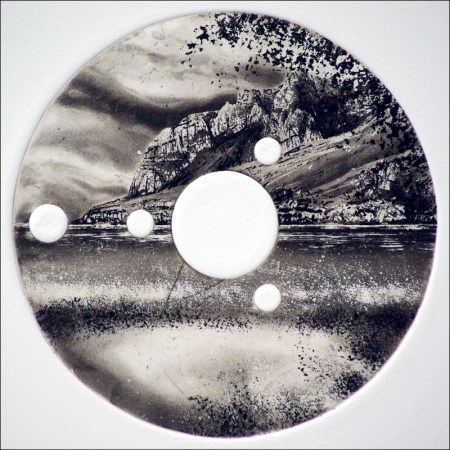Ian Brooks was always interested in both art and science, alternating throughout his school life as to which he wanted to pursue. In the end, he took the easier option of studying Physics, staying on at Manchester for a PhD in Atmospheric physics, and then moved to San Diego for post-doctoral research in marine meteorology. Throughout his time there, Ian maintained a part-time side-line in art, doing occasional bits of illustration, selling a few paintings and drawings along the way. In 2002 he moved to Leeds to further his studies at The University of Leeds, with academic life getting busier it left little time for his art. Ian is still in Leeds, now as a professor in the Institute for Climate and Atmospheric Science, doing research at the interface of atmospheric and oceanographic science, and on Arctic climate.
A few years ago, Ian decided he needed to make time for art again. Starting to attend regular life drawing sessions, he began experimenting with print making. After being encouraged by a friend to try etching, Ian’s became a little bit obsessed, finding a new inspiration in the restrictions imposed by the technique.
Most of Ian’s current work is landscape, drawing inspiration from both the remote locations he visits as part of his research or from the moorlands close to his home in Haworth. In the latter case, the works start as sketches in graphite and ink, made while out walking on the moors. He rarely works up more detailed drawings, but starts work directly on the copper plate using the sketchbook drawings as the foundation of the image, supplemented by details from photographs. At some point, Ian says he stops looking at the reference material and lets the etching itself dictate what is needed to ‘finish’ it.
All of his works at Hope Gallery are primarily aquatint etchings – the shades of grey generated by the bite of acid around a fine dusting of resin fused to the surface of the copper plate – with occasional use of soft-ground etching. The images are built up in many layers, with areas either stopped out with varnish, or exposed via a sugar-lift. The acid is usually washed on with a brush in the manner of watercolour to allow subtle gradations of tone.


